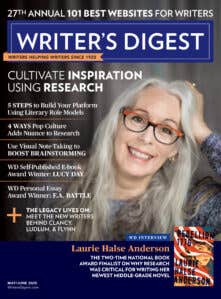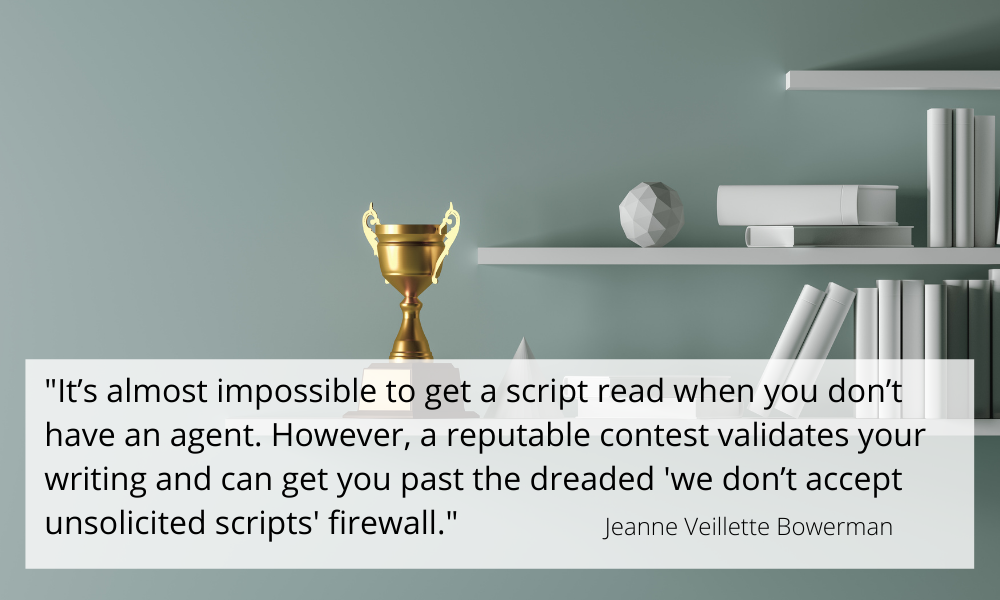5 Essential Tips for Meeting With Editors – Plus, what’s it like to win a WD competition?
Today’s offering is a special guest post from author and journalistJohn Moir, the winner of the 78th Annual Writer’s Digest Writing Competition. After traveling with him to New York to…
Today’s offering is a special guest post from author and journalistJohn Moir, the winner of the 78th Annual Writer’s Digest Writing Competition. After traveling with him to New York to meet editors as part of his grand prize, we asked John to provide a recap of his trip, and also offer up his top tips for getting the most out of meetings with publishing pros (provided below, as a sneak peak to the February 2011 issue of WD). Enjoy. To find out more about next year’s competition, visit writersdigest.com/competitions. We'll be back with more prompts Wednesday—and a swag drawing Friday.
***
Several years ago I attended a writing conference where the keynote speaker described how her climb onto the bestseller list began with finding an agent. But she cautioned the audience how hard it had been. “Agents typically reject 98 percent of book proposals,” she said. Later, she was asked how she persevered in the face of such daunting odds. “I figured if I didn’t try, I had zero chance. I needed to put my work into the world.” Then she smiled. “Plus, I didn’t think the odds applied to me.”
If the chances of finding an agent appear slim, the odds of winning the Annual Writer’s Digest Writing Competition, with more than 13,000 entries, seem positively ludicrous.
That’s why I was at first puzzled when the phone rang one morning and a Writer’s Digest editor introduced himself. When he announced that he had good news, the conversation quickly became an out-of-body experience: I’ve just won WHAT?
As it sank in that I was the grand-prize winner, the editor’s voice took on an otherworldly tone, as if he were speaking to me underwater. And I know this might sound impossible but honestly, as I grasped the implications of his news, my body levitated off the ground. It took several minutes before my feet returned to earth.
I felt incredibly grateful and humbled to be selected. Sure, I was proud of the piece I had sent in [the feature article “Condors in a Coal Mine” temp_href="http://www.writersdigest.com/article/wdannual09 "]. But I also knew many other powerful pieces of writing had been submitted. Just like that keynote speaker, I had put my work into the world and somehow defied the odds.
My entry was the competition’s first nonfiction winner in the WD staff’s memory, which presented an interesting conundrum. Part of the prize included a three-day trip to New York to meet with agents or editors. Past winners had met with fiction editors or agents. But I already had an excellent nonfiction book agent. What I wanted to do was to make connections at magazines and newspapers for the many articles I write. Zac Petit, WD’s managing editor, took on the challenge. I sent Zac a list of New York-based publications that interested me, and he started making phone calls. By the time my wife and I boarded a plane for New York, WD had lined up meetings with top editors at The New Yorker, Harper’s, Audubon and The New York Times.
When we met Zac for dinner the first night, I felt an immediate kinship. After just a few minutes of conversation, I could see that here was a fellow journalist, a guy who knew the territory. One of the best parts of the trip was having time to exchange ideas and stories about journalism with Zac as we made the rounds visiting editors.
The meetings were fascinating for both of us. Each editor was intelligent and passionate about his or her craft. The discussions were broad-ranging, and I was impressed with how generous they were with their time. They were articulate and perceptive about what makes a great story and the nuances that they look for in pieces for their specific publications. I flew home having established excellent contacts. In addition, an idea I pitched to The New York Times editor resulted in an on-the-spot assignment.
Doors had opened. And in this wacky, unpredictable writing world, you just don’t know where those doors will lead. What I do know is that my job is to keep putting my writing out into the world and trusting that magic can happen. It means having the audacity to believe that you can defy the odds.
***
[Also, You don’t always need to win a competition to rope the kind of one-on-one meeting that can bolster your writing career—periodical and book editors are available at conferences and other events, and sometimes all it takes to set something up is an e-mail. So we asked Moir to share what he learned about getting the most out of meetings with editors.]
1. Do your homework. Before your meeting, see what you can find on the Internet about the editor’s background, interests and the type of stories she typically handles. Many editors are also writers, and their articles can offer a window into their passions. When I met with a New York Times editor, he’d had an article in that day’s edition about the science of spicy foods. Because I’d read the piece that morning, it provided me with a natural icebreaker and paved the way for a discussion about what types of ideas he was looking for. In addition, always read recent issues (or familiarize yourself with a publisher’s list) to see where your work might best fit, and research the submission guidelines in resources such as Writer’s Market or on the Web.
2. Prepare your pitch. You don’t have to pitch in person at the meeting—you might just use it as a general opportunity to learn about how you can break in—but if you do, organize your ideas like a traditional news story, with the most important information in the lede. A good pitch is short and pithy. Aim for under a minute; 30 seconds is even better. Write it out, memorize it, and when the time comes, deliver it s-l-o-w-l-y to allow the editor time to absorb the idea. Pause. Give the editor a chance to respond. Be prepared to expand on your idea.
3. Think like an editor. Before the meeting, take a moment to imagine that you’re the editor listening to your pitch, and try to anticipate his questions. Why are you the best person to write this? How will you get the information you need? What type of reader will enjoy your piece? If there are any obvious stumbling blocks to completing the work (e.g., obtaining a key interview), head off the editor’s questions by addressing those issues upfront.
4. Listen. While preparation is the foundation for a successful meeting, don’t get locked into a monologue. You’re not just here to talk; you’re here to learn. Interact in the moment. Use your preparation for support, but not as a fixed script. Listen closely to what the editor tells you and respond in kind.
5. Make a connection. Beyond merely pitching an idea, aim to begin building a working relationship with the editor. Find out what suggestions she has for future opportunities or pitches. At the same time, weave into the conversation your own experience and writing interests. When the meeting is over, present the editor with your business card. Even better, leave a folder containing a short bio and a sample of your work. In return, be sure to ask for the editor’s business card or contact information. When you get home—even if you didn’t close a deal—send the editor an e-mail letting him know how much you appreciated his time.
Zachary Petit is a freelance journalist and editor, and a lifelong literary and design nerd. He's also a former senior managing editor of Writer’s Digest magazine. Follow him on Twitter @ZacharyPetit.







